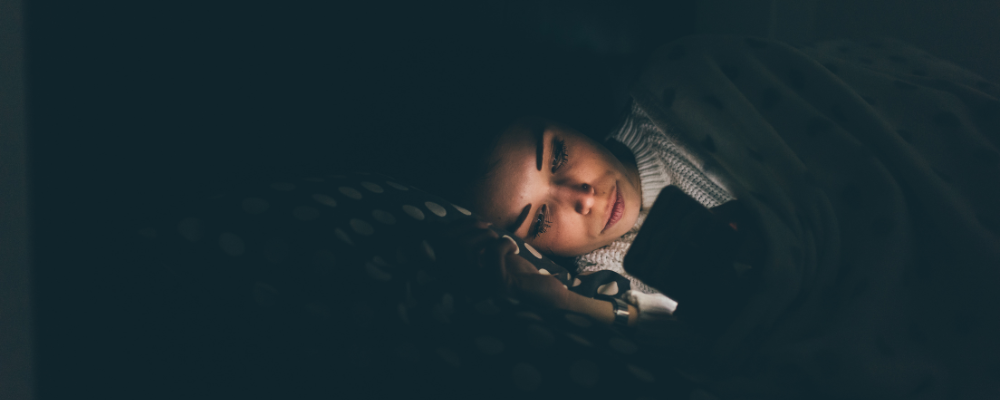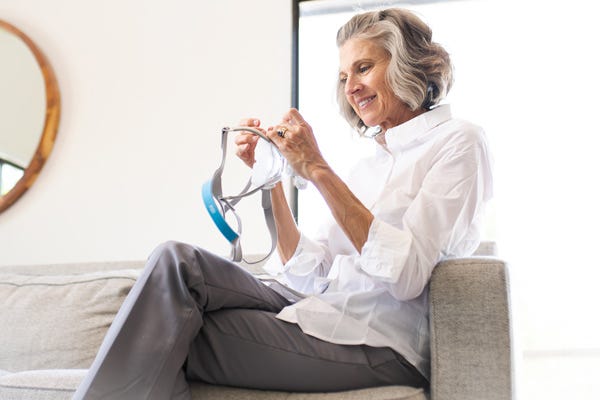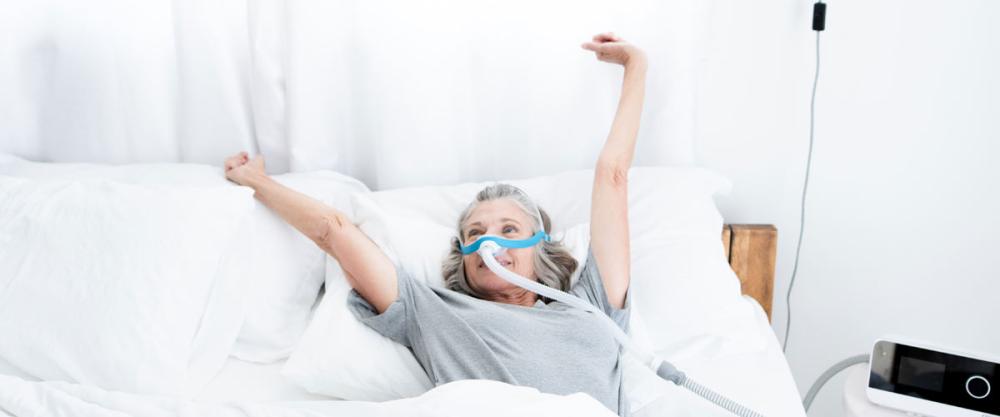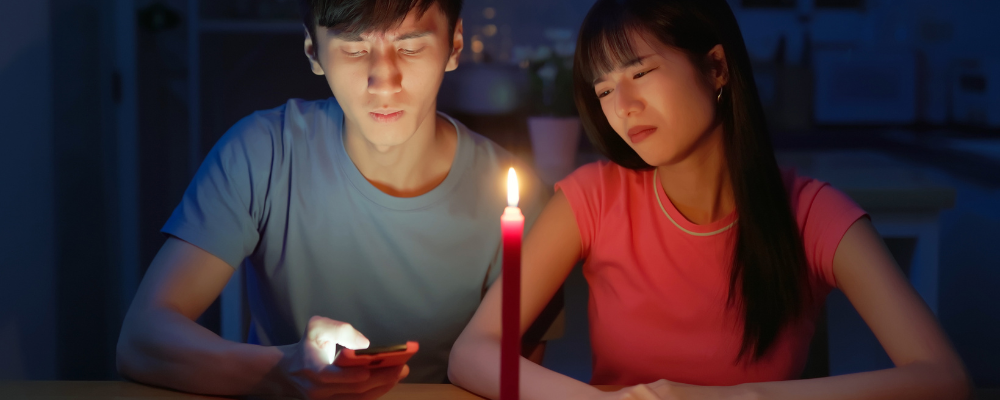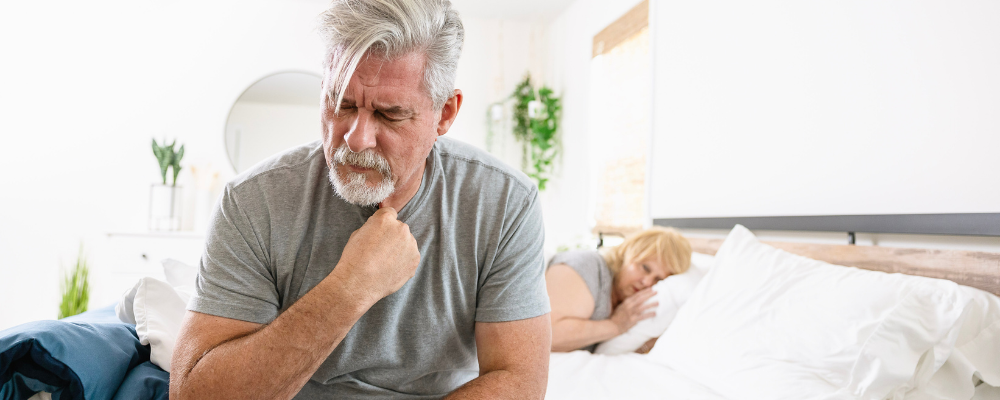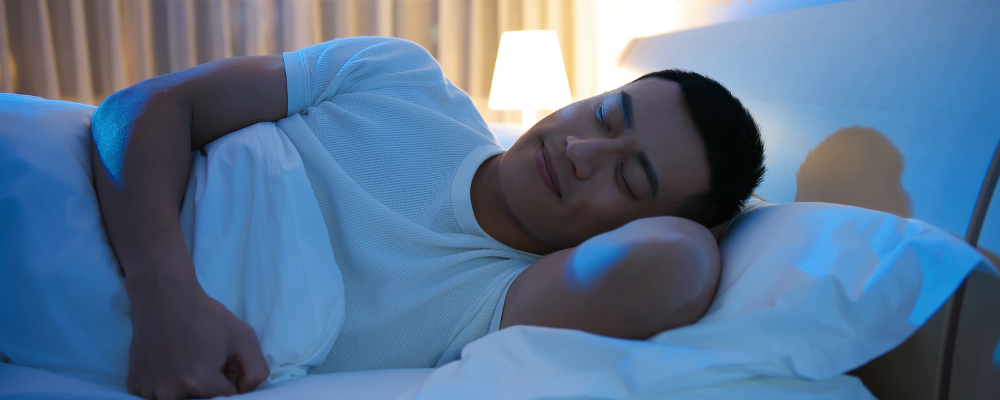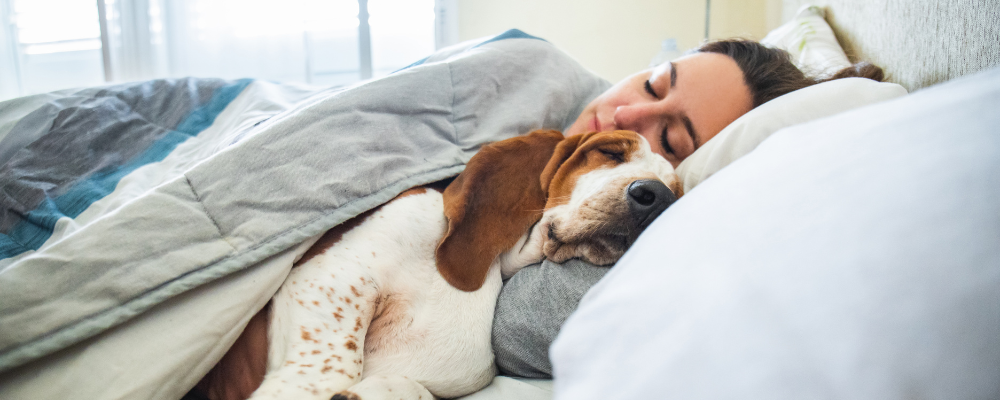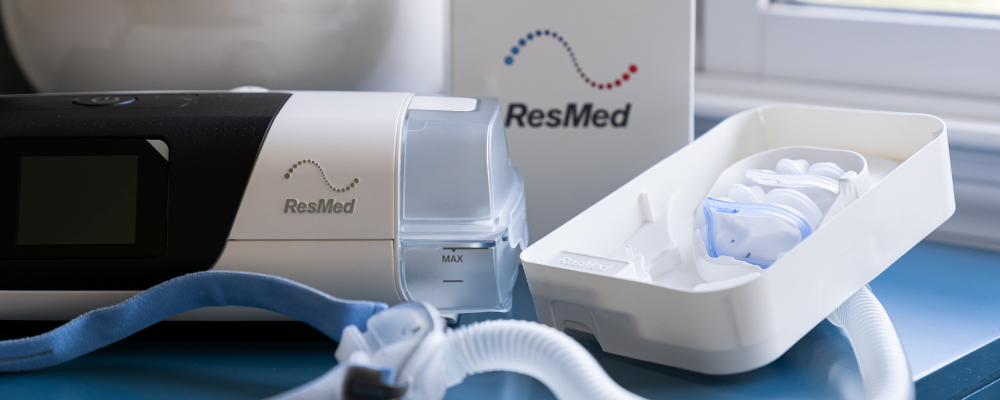When was the last time you asked yourself, is technology affecting my good night’s sleep? It’s okay if you can’t remember. Unless you recently watched The Terminator and are consistently having nightmares about the fictional artificial superintelligence, Skynet, technology affecting our good night’s sleep is not something we often think about.
Aeroflow Sleep will open your eyes to 10 ways technology affects your sleep; including ways that particularly impact our patients with sleep apnea. We’ll then help close your eyes again so you can sleep soundly, with tips, tricks, even technological devices you can actually utilize to change your sleep habits for the better. After all, a good night’s sleep is waiting for you.
IN THIS ARTICLE:
How Does Technology Affect Sleep?
Is Technology Good Or Bad For Sleep?
4 Ways Technology Is Bad For Sleep
6 Ways Technology Is Good For Sleep
Be Mindful Of The Tech You Use Before Bed
CPAP SUPPLIES THROUGH INSURANCE:
Aeroflow Sleep is in-network with most primary insurance companies and is accreditted by Medicare and Medicaid. Complete our Qualify Through Insurance Form, and we will automatically check to see if your plan covers CPAP supplies; including a machine, mask, and accessories. ***Must have a sleep study to qualify.***
You will also receive the care and attention every sleep apnea patient deserves; one-on-one clinical support in-home or via telehealth, a dedicated Sleep Specialist you can contact during business hours, and a user-friendly online portal with tailored replacement schedule, important updates and notifications, and educational resources.
Let us take the headache out of healthcare. Join the Aeroflow Sleep family today! It only takes 5-7 minutes to get started.
How Does Technology Affect Sleep?
Science has proven time and time again that sleep is essential to our wellbeing. Yet, within the past century—with the invention of electricity, modern day society has rapidly begun to take the need for sleep for granted.
A recent study conducted in Saudi Arabia found that of more than 10,000 adults surveyed, 95% had smartphones in the bedrooms, which were used regularly at night by at least 80% of respondents. Those with regular use of almost all devices were “associated with ‘bad’ or ‘very bad’ sleep quality; smartphone or tablet use was associated with sleep latency by more than 30 minutes; [and] electronic device use was associated with nearly a 2-fold risk of moderate to severe excessive daytime sleepiness (EDS.)”
The lack of sleep caused by technology is both mentally and physically taxing. EDS is linked with obesity, diabetes, depression, and sleep apnea. It’s even possible the effects of using technology before bed are fatal. For example, the Centers for Disease Control and Prevention (CDC) attributes up to a third of fatal crashes to drowsy driving. Furthermore, falling asleep at the wheel was most often reported by adults who slept less than 6 hours.
Is Technology Good Or Bad For Sleep?
If picking up a smartphone at night takes away 30 minutes of quality sleep, you put your next day at risk every time you do…or, do you? Can technology be both bad AND good for sleep? The short answer is, yes; it all depends on how you use the technology. Despite all of technology’s negative effects on sleep, there are ways to reduce them, even by using technology itself.
This is the part where we break down the 10 ways technology may be affecting your good night’s sleep, for better or worse. Let’s start with the problems:
4 Ways Technology Is Bad For Sleep
1. Too Much Screen Time Suppresses Melatonin Production
Even before you begin your bedtime routine, too much screen time can seriously impact your quality of sleep. One article quotes Joanna Cooper, M.D., a neurologist and sleep medicine specialist with the Sutter East Bay Medical Foundation, “Our evening texting, television shows, or video games are stimulating, keeping the brain busy and wound up, even causing adrenaline rushes instead of calm.”
What Dr. Cooper is calling “calm” is our melatonin production. Melatonin is a natural hormone our bodies need to begin the sleep cycle and continues to be released while we’re sleeping. The same source warns, “Two or more hours of screen time in the evening can seriously disrupt the melatonin surge needed to fall asleep.” So, instead of watching TV to wind down, we recommend meditating or taking a bath.
Replacing your natural melatonin surge with supplements is NOT recommended, especially if you have sleep apnea.
2. Blue Light Disrupts Your Circadian Rhythm
Most screens emit blue light, which is environmentally friendly but detrimental to your circadian rhythm. The amount of blue light you use at night can throw our body clock off, because blue is the color on the light spectrum that most resembles daylight. It boosts attention, reaction times, and mood; none of which is needed while sleeping.
Harvard Medical School suggests using dim, red lights for night lights, which are less likely to shift circadian rhythms. If you work a night shift, consider wearing blue-blocking glasses and expose yourself to a lot of bright light during the day; this will boost your chances of sleeping when your sleep schedule calls for it.
3. Smartphones Can Be Distracting
From scrolling through social media to playing video games, it’s no wonder smartphones can be distracting before bed. Sure, your smartphone can be used as an alarm clock, but you should set that alarm and never touch it again. Set your cell phone to silent too, to avoid hearing any phone calls or notifications aside from the alarm, and then leave it on your nightstand or dresser; somewhere out of arm’s reach to avoid temptation.
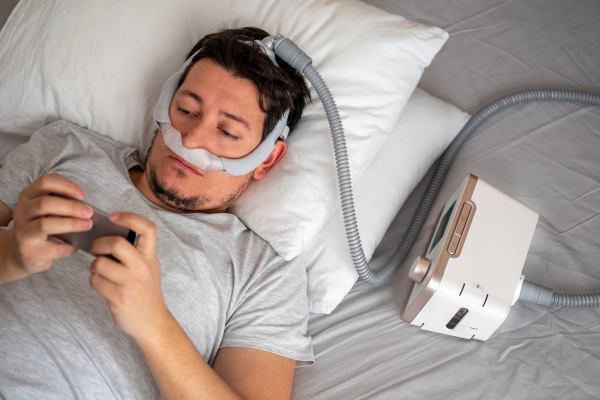

4. E-Readers Prolong Sleep Problems
Finally, reading is a wonderful way to relax. However, recent studies show that if you choose to use an e-reader–like a Nook or Kindle–before bed, you prolong the amount of time it takes to fall asleep and reduce alertness the following day. E-readers are certainly an improvement over smartphones, because they emit far less blue light.
But paper’s luminosity is entirely dependent on its surroundings, so the obvious, easy fix that our bookworms can enjoy is a traditional book. Turn on a warm, low light just bright enough to read the pages without straining your eyes and settle in for the evening. This is the optimal way to relax by reading.
6 Ways Technology Is Good For Sleep
Now that we know what to avoid, let’s take a look at the technology that helps you fall asleep; some of which particularly help our primary audience—those with sleep apnea:
1. White Noise Machines May Improve Your Sleep Environment
Technology that promotes sleep hygiene can be a godsend. For example, white noise machines play soothing audio tracks to help us fall asleep. You may like listening to waves crashing on a beach, rain falling against a tin roof, or crickets chirping in starlit forest; anything that masks a loud city, howling dogs, even the sound of silence. The New York Times lists this year’s best white noise machines you can try.
2. Thermostats In Auto Mode Offer The Best Thermoregulation
Your thermostat also promotes sleep hygiene. Yes, the same smart technology in our cell phones is now in our thermostats–like Google Nest–allowing you to automatically switch from heating to cooling once the room temperature crosses a certain threshold. This is called auto changeover, and all you have to do is designate what that threshold temperature is to keep your bedroom nice and cold, and then leave the switch toggled to the Auto position.
Not sure what the best sleep temperature is for you? Well, the perfect room temperature changes as you age:
- Children And Adolescents: Start with the thermostat set at 72 degrees Fahrenheit. Then, reduce the temperature every 15 minutes until they fall asleep.
- Adults: Your perfect room temperature shouldn’t have changed much since then. If it has, revisit the trial and error method used for children and adolescents but starting from where your thermostat is set now.
- Seniors: Anyone 65 years or older probably shouldn’t set the thermostat any warmer than 67 degrees Fahrenheit.
- Sleep Apnea Patients: Regardless of age, adults with OSA typically sleep longer and feel more alert when the thermostat is set at 60 degrees Fahrenheit.
3. Certain Mobile Apps Are Designed To Help You Fall Asleep
It may be contradictory, but when used responsibly, smartphones are beneficial for falling asleep. Certain mobile apps–like Calm, Headspace, and Sleep Reset–offer comforting audiobooks, interactive breathing exercises, even sleep tracking.
In fact, there are apps specifically designed to help those with sleep apnea. Popular PAP machine manufacturers–like ResMed–have created their own mobile apps, monitoring your sleep patterns, collecting your compliance data, and more. myAir is ResMed’s mobile app, and with that, we are now moving into the territory of technology that not only helps you fall asleep but can directly benefit those with sleep health concerns.
4. Wearables Track Sleep Apnea And Detect Sleep Disorders
The sleep trackers in mobile apps can also be found in smartwatches–like Apple watches, Fitbit, or Garmin. The difference is in how they function. Smartwatch sleep trackers are actually accelerometers. Rather than track your sleep, an accelerometer tracks movement and assumes if you’re not moving, you must be sleeping. Apple Watch takes that educated guess one step further.
Although Apple is not able to claim its smartwatch is anything more than a “wellness device,” the Series 6 and 7 watches are considered Class II medical devices with FDA-cleared ECG features. Not only can these newer gadgets estimate your sleep duration, sleep phases, and sleep quality, they combine the data gathered from the accelerometer and its heart-rate sensor to detect sleep disorders; including sleep apnea.
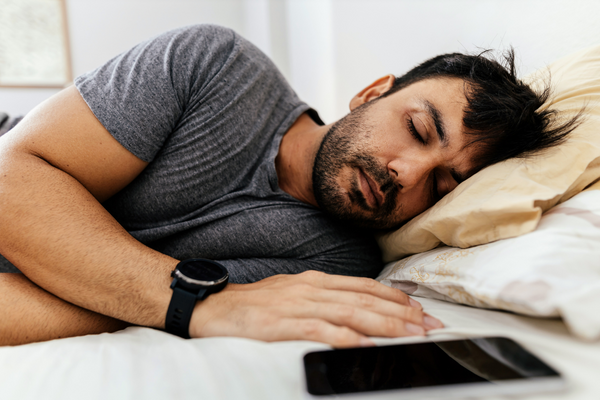

5. Smart Mattresses Adjust Support Based On Your Position
Smart mattresses are yet another form of smart technology. The National Sleep Foundation says, “A grid of sensors embedded in the mattress can automatically adjust the amount of support the mattress provides, increasing or decreasing the bed’s firmness based on the distribution of your weight and your sleep position. This can be especially useful for those with sleep apnea, because both weight and sleep position are important to that particular sleep disorder.
Registered Nurse and Director of Clinical Operations at Aeroflow Sleep, Michelle Worley explains, “Sleeping on either side helps reduce the chance of having an apnea event from obstruction.” When you sleep on your back or stomach, your neck muscles are lying flat against your airway, and gravity will push any excess fat against them too, forcing the airway to narrow and causing undue stress or pressure.
6. Patients With Sleep Disorders Need Sleep Technology
If you’ve been diagnosed with sleep apnea, you often need some form of an electronic device to achieve better sleep health. In the case of sleep apnea, the most commonly prescribed treatment is a sleep technology called a CPAP machine. CPAP stands for continuous positive airway pressure, and the machine blows a consistent air pressure into your airways to keep them from collapsing.
Need a CPAP machine? "Come with [Aeroflow Sleep] if you want to live." - The Terminator (1984)
Be Mindful Of The Tech You Use Before Bed
The takeaway is that what defines technology use and abuse is you. Too much screen time, blue light, scrolling, and e-reading are all bad ways to fall asleep. White noise machines, thermostats in auto mode, certain mobile apps, smartwatches, smart mattresses, and CPAP equipment are all good sleep technologies. So, be mindful of the tech you use before bed and know when to ask for additional help.
References
AlShareef SM. The impact of bedtime technology use on sleep quality and excessive daytime sleepiness in adults. Sleep Sci. 2022 Apr-Jun;15(Spec 2):318-327. doi: 10.5935/1984-0063.20200128. PMID: 35371396; PMCID: PMC8906383.
Centers for Disease Control and Prevention (CDC). Drowsy driving - 19 states and the District of Columbia, 2009-2010. MMWR Morb Mortal Wkly Rep. 2013 Jan 4;61(51-52):1033-7. PMID: 23282860.
Cooper, Joanna A. “Screens and Your Sleep: The Impact of Nighttime Use.” Screens And Your Sleep, Sutter Health, https://www.sutterhealth.org/health/sleep/screens-and-your-sleep-the-impact-of-nighttime-use.
“Blue Light Has a Dark Side.” Harvard Health Publishing, Harvard Medical School, https://www.health.harvard.edu/staying-healthy/blue-light-has-a-dark-side.
Serra, Joanell. "What Are the Benefits of Reading in Bed? And Which Method Is Best: eReaders or Books?" Sleep.com, https://www.sleep.com/sleep-tech/reading-in-bed#:~:text=Studies%20show%20exposure%20to%20blue,reduces%20alertness%20the%20following%20morning. Cited: Proceedings of the National Academy of Sciences of the United States of America. PMID: Vol. 112; 2015.
Chen, Joanne. “The Best White Noise Machine.” Sleep Geart, The New York Times, 14 Dec. 2021, https://www.nytimes.com/wirecutter/reviews/best-white-noise-machine/.
“How Technology Can Help You Sleep Better.” Your Sleep Environment, National Sleep Foundation, 1 Nov. 2020, https://www.thensf.org/technology-and-sleep/.


